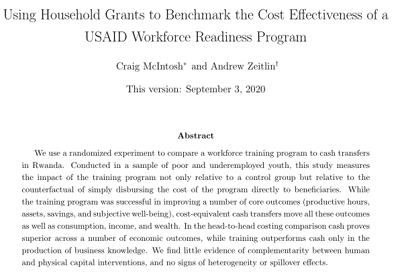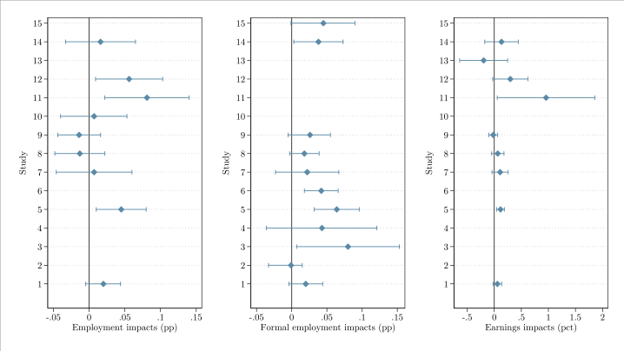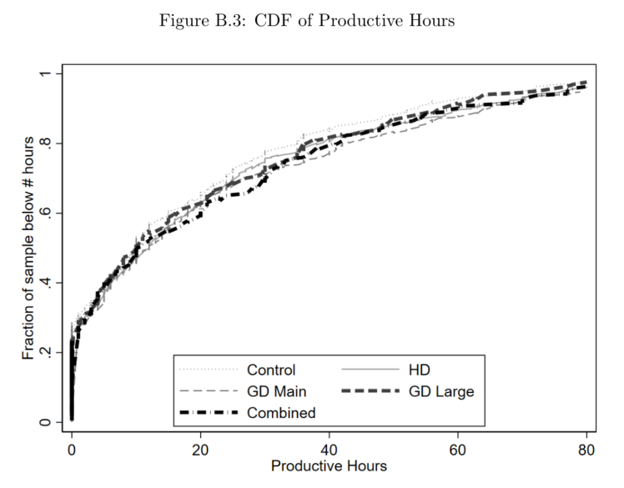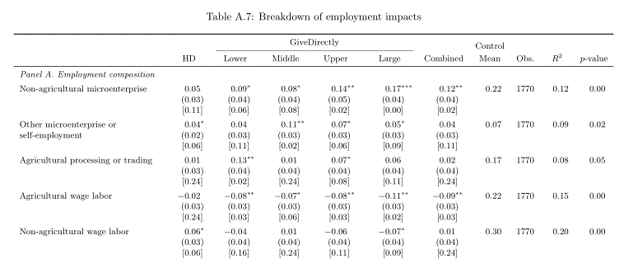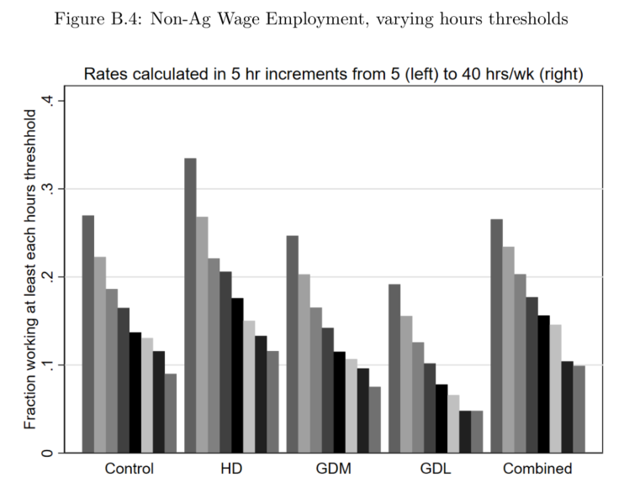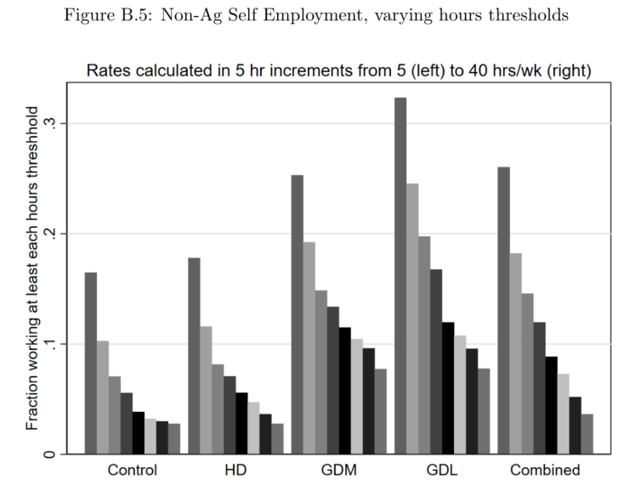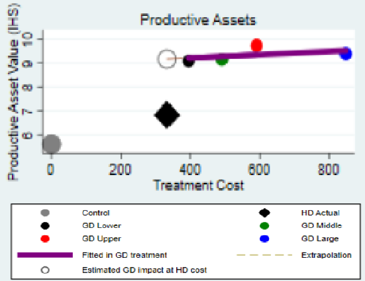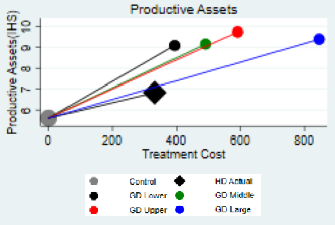Should developing countries use training or cash grants to combat youth unemployment?
Craig McIntosh & I have a new paper out today helping answer that question, working in Rwanda w/ @poverty_action, @EDCtweets, @GiveDirectly, & @USAID
Working paper: http://bit.ly/BenchmarkingGDHD.">https://bit.ly/Benchmark...
Craig McIntosh & I have a new paper out today helping answer that question, working in Rwanda w/ @poverty_action, @EDCtweets, @GiveDirectly, & @USAID
Working paper: http://bit.ly/BenchmarkingGDHD.">https://bit.ly/Benchmark...
This paper is unusual in that it has been through the Journal of Development Economics& #39;s pre-results review process. The paper benefited greatly from their comments. This is a nice model for projects like this, where you want to get things right up front for policy conversations.
Why benchmark job training against cash? Such programs attract huge amounts of funding, even though impacts are very mixed (pic summarizes @dmckenzie001& #39;s WBRO 2017 review). The predecessor to the program we evaluate had positive impacts based on RCT evidence (Alcid 2014).
Working with @EDCtweets and @GiveDirectly, we evaluate the Huguka Dukore job training program against control, both comparably sized and substantially larger cash transfers, and a combined arm providing training + cash; randomization is at the individual level.
18 months after baseline, we find neither program moved overall employment rates, but both training and mid-sized transfers increase hours worked. Interestingly, this masks the fact that training increased non-agric wage labor and cash moved people into non-agric microenterprise.
A cash transfer equivalent to the cost of the training nearly doubles income and quadruples productive assets (compared to control). Training also boosts these -- but not as much -- striking considering there& #39;s no transfer in the training program!
We find no evidence of complementarities: impacts in the Combined arm look remarkably similar to the sum of cash + training component impacts. So no sign here of compounding effects from multiple constraints.
We find no evidence of heterogeneity on pre-specified subgroups: by gender, risk aversion, or baseline consumption, and we test for interference using variation in saturation within villages and find no evidence.
Taking these results together, cash "wins" a cost-equivalent comparison here, which we find by fitting a regression line to the impacts of cash (upper shaded circles) and comparing it with training (diamond) at a value that would have cost the same to deliver.
We can also compare benefit-cost ratios for different transfer values, shown as slopes below. For many outcomes, impacts of larger transfers don& #39;t rise in proportion to costs, relative to small & mid-sized transfers. Better to give mid amounts to more people.
Still, these effects are relatively short term (cf @cblatts, Fiala, Martinez 2020), so part of the hope for training is greater persistence. Our 36-month follow-up will begin to speak to this, albeit through the lens of resilience to the pandemic& #39;s economic shock.
Finally, thanks to partners @poverty_action, @EDCtweets, @GiveDirectly, and @USAID. These multi-party comparative studies take a village to pull off, and we were lucky to work with people & institutions so interested in generating evidence.
... and these great reflections from @jcarbiv speak better than I possibly could to all that is involved in moving these conversations on evidence in large institutions like USAID: https://twitter.com/jcarbiv/status/1301668257548709888?s=20">https://twitter.com/jcarbiv/s...

 Read on Twitter
Read on Twitter